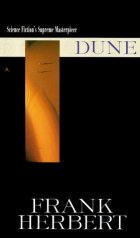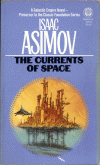It’s been quite a while since I’ve read Dune. I found my way to this interesting conceptualization, Sietch Nevada, through my regular StumbleUpon clicking. For those not familiar with Dune by Frank Herbert, please check it out! It is an excellent novel, as described in my review. I find it interesting how many ideas are drawn from Sci-Fi. Everyday technology like cell phones, video conferencing, and robots (well maybe not everyday yet), were hinted to by authors long before they were developed. I find the Sietch concept intriguing because I lived in Phoenix, AZ for many years. A few years after I left, I started hearing about how Lake Powell, fed by the Colorado River, might dry up soon. I thought that it meant there would be no more water, but experts are referring to “dry” as unable to generate hydroelectric power. So, not only will water levels be low, but there could be power shortages as well!
Sietch Nevada concept straight from Frank Herbert’s Dune
Related Post
Robotic Exoskeleton to Enhance SoldiersRobotic Exoskeleton to Enhance Soldiers
I recently ran across this interesting video during one of my many sessions with StumbleUpon. The video via GeeksAreSexy (shown after the “more”) demonstrates a guy in a robotic exoskeleton performing a variety of tasks to demonstrate the strength of the device. This was a weird coincidence because I was in the process of reading Starship Troopers by Robert A. Heinlein. His Mobile Infantry armor was much more elaborate, but I’m always interested when things from science fiction start to become science fact. (more…)
Svaha by Charles de LintSvaha by Charles de Lint

As I sat down to write this review, I realized I couldn’t remember the last time I read an entire physical book. Since 2018, all my novel reading has been on a Kindle Paperwhite. Before that, I used a Kindle Fire but still alternated with physical books. Reading on the Fire was always a bit of a hassle because of the glare. The Paperwhite’s e-paper display is in a completely different league. I like it so much that when I revisited the Foundation novels a few years ago, I borrowed the ebooks from my local library even though I already had the physical copies on my shelf. One nice perk of the Paperwhite is that it’s easier to read while eating because I can flip pages with my knuckle.
Recently I wanted to disconnect from electronics before bed. The best way seemed to be grabbing something from my bookshelf that I hadn’t read yet and didn’t already have digitally. That’s when I noticed Svaha by Charles de Lint. I vaguely remembered seeing a recommendation for it years ago and picking up a copy through Book Mooch, a site where people trade books they’re done with. I’m pretty sure it’s been sitting unread for over ten years.
When I pulled Svaha off the shelf, I could barely remember how or why I got it. The cover, showing a Native American man with a wolf, didn’t ring any bells, and the back-cover description didn’t sound like my usual genre. Most of my reading leans toward science fiction and, more recently, fantasy. Still, I decided to trust my past self and give it a shot.
The story takes place in Canada sometime after 2094. Without spoiling too much, the setup is that in the 1990s a Native American named Daniel Hollow Horn became a music superstar and used his fortune to educate and empower his people. Over time they became world leaders in science, technology, and law, eventually surpassing the rest of the world. After a period of war, they withdrew into self-contained “Enclaves,” kind of like Wakanda from Black Panther, except everyone knows where they are. They managed to protect themselves from the pollution and fallout left behind while the rest of the world fell apart.
The Currents of Space by Isaac AsimovThe Currents of Space by Isaac Asimov
It is obvious after the first few chapters that this novel is on a whole different level than “The Stars, Like Dust.” There are more characters, deeper development, and various plot lines are explained through flashbacks. It seemed like Asimov spent a lot more time on this book than the last one. It is just a tad bit longer at 230 pages in my paperback copy, but quite bit more happens. There is still the medieval feel with Sark ruling Florinia and the various class struggles that go with that. (more…)

